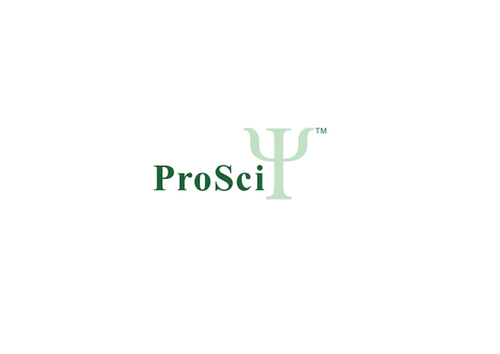Product Description
IL-31 Antibody (biotin) | 38-174 | ProSci
Host: Rabbit
Reactivity: Human
Homology: N/A
Immunogen: Produced from sera of rabbits pre-immunized with highly pure (>98%) recombinant hIL-31. Human IL-31 specific antibody was purified by affinity chromatography and then biotinylated.
Research Area: Immunology, Chemokines & Cytokines, Antibody Pairs
Tested Application: E, WB
Application: ELISA:
Sandwich:
To detect hIL-31 by sandwich ELISA (using 100 μL/well antibody solution) a concentration of 0.25 - 1.0 μg/mL of this antibody is required. This biotinylated polyclonal antibody, in conjunction with our polyclonal Anti-Human IL-31 as a capture antibody, allows the detection of at least 0.2 - 0.4 ng/well of recombinant hIL-31.
Western Blot:
To detect hIL-31 by Western Blot analysis this antibody can be used at a concentration of 0.1 - 0.2 μg/mL. Used in conjunction with compatible secondary reagents the detection limit for recombinant hIL-31 is 1.5 - 3.0 ng/lane, under either reducing or non-reducing conditions.
Specificiy: N/A
Positive Control 1: N/A
Positive Control 2: N/A
Positive Control 3: N/A
Positive Control 4: N/A
Positive Control 5: N/A
Positive Control 6: N/A
Molecular Weight: N/A
Validation: N/A
Isoform: N/A
Purification: N/A
Clonality: Polyclonal
Clone: N/A
Isotype: N/A
Conjugate: Biotin
Physical State: Lyophilized
Buffer: N/A
Concentration: N/A
Storage Condition: IL-31 antibody is stable for at least 2 years from date of receipt at -20˚C. The reconstituted antibody is stable for at least two weeks at 2-8˚C. Frozen aliquots are stable for at least 6 months when stored at -20˚C. Avoid repeated freeze-thaw cycles.
Alternate Name: IL-31Interleukin-31IL-31
User Note: Centrifuge vial prior to opening.
BACKGROUND: Interleukin 31 (IL-31) is a recently discovered T-cell cytokine closely related to IL-6 type cytokines and is preferentially produced by T helper type 2 cells. IL-31 activity is mediated through the ligand-induced oligomerization of a dimeric receptor complex containing IL-31 receptor A and oncostatin M receptor. In response to IL-31 binding, these proteins activate the JAK/STAT and the AKT signaling pathways. RNA levels of IL-31 receptor A and oncostatin M receptor are induced in activated monocytes but are expressed constitutively in epithelial cells. IL-31, when overexpressed in transgenic mice, results in the development of pruritis, alopecia and skin lesions, and in humans may result in atopic dermatitis, suggesting that IL-31 may represent a novel target for antipruritic drug development.
 Euro
Euro
 USD
USD
 British Pound
British Pound
 NULL
NULL










